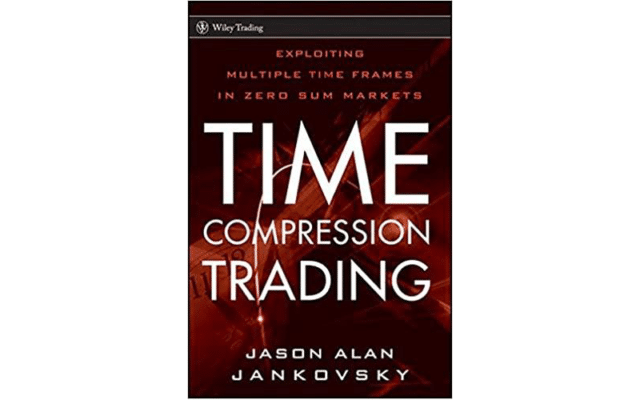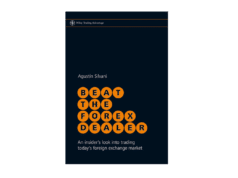In Part 1 of this article, readers will briefly learn concepts relating to the zero-sum game, order flow, exploiting technical analysis, and what Jankovsky frequently refers to as time compression. This section is more or less about half of the book and is the more challenging part to grasp.
Fortunately, in this Part 2, the ideas aren’t as advanced and unconventional, but this doesn’t mean they aren’t imperative nonetheless. Read on to find out the four more powerful concepts from the Time Compression book by the veteran ‘Lion of LaSalle Street.’
The concept of ‘right now’ thinking
Jankovsky makes several comparisons between the behaviors of retail and professional investors. He makes confident statements on how the mindset of most retail traders is based on making money right now, which is in minutes, hours, or before the end of the day.
Numerous studies show the frequency to which non-professional investors execute and how many of them close their accounts before a year passes. Having this attitude often makes it challenging to make risk-conscious, logical decisions, especially if the account is somewhat smaller.
If leverage comes into the picture, the negative consequences are magnified. In truth, even though some instruments are more volatile than others, the price changes generally aren’t remarkably tremendous.
However, if the margin is used incorrectly, a seemingly small move can easily wipe out or cause a substantial dent in someone’s account due to the ‘right now’ mentality.
The concept of higher time-frames
One consistent theme with Jankovsky’s teachings is how they center around long-term thinking. The author presents various arguments on why the majority of losing traders typically use lower time-frames to make decisions.
Much of the existing trading literature shows substantial evidence on why such charts are difficult to profit from consistently due to ‘noise,’ which is essentially erratic, short-lived price fluctuations.
The psychology of why millions gravitate towards trading styles using low time-frames – those below the 4HR chart usually – is because of instant gratification or the inherent need to make money now. If we couple this with the leverage on offer, it becomes easy to see how substantial amounts of money can be lost in a relatively short period.
The premise of the chapter dealing with this concept is advising traders how they should be thinking and behaving in the markets, as in observing higher time-frames and not falling into the trap of ‘right now’ mentality.
Any experienced technical trader will attest to how long-term charts are essential to seeing a bird’s eye view of the market and, more or less, predict meaningful moves in advance. Low time-frames are still helpful in timing entries and gauging some early signs of price shifts.
However, assuming one treats their trading as a long-term investment, charts starting from the 4HR and above are where they should be formulating meaningful trading ideas.
The concept of probabilities instead of certainties
The notion of probabilities isn’t something many realistically understand and implement. Whether the instrument in question is forex, indices, stocks, or cryptocurrencies, these are probabilistic arenas.
From Jankovsky’s point of view, losing traders hardly ever consider losing until after the fact, often looking for solid certainty their positions will yield positively. Although any trader wishing to make a profit uses some confirmation factors, trading is really more a game of probabilities than certainties.
Therefore, there is a limit whereby one should accept they can never know for sure what’s going to happen next. Furthermore, it is never about one position but rather an extended series of positions with small losers and substantially larger winners.
The concept of three market states
At any given time, a market is always in three phases: an uptrend, a downtrend, or a range. Jankovsky describes intricately how an up or downtrend is an order flow imbalance, which is the natural state of the market. In simpler terms, when the price is moving up, there are more buy than sell orders (the imbalance), and vice versa.
There’s a multitude of methods traders use to work out trends, but few can tell when the price is in a range. The author refers to a sideways market as an order flow balance because the number of buy or sell orders is more or less equal or balanced.
Many analysts do not realize the significance of range as a potential sign for the order flow to be imbalanced at some point, causing the price to trend again either in its previous direction or a new one.
Technically, no market can stay trading sideways forever. A range is a momentous period to observe. Traders should always note these moments and anticipate that a new move is on the horizon at some point in time, typically a sharp one.
Jankovsky dives into a lot more intricate detail in these structures towards the last four chapters of the book to help readers define the state of an instrument at any time.
Final word
Having reached this point, it may be tricky to accurately define the main essence of this book because it touches on a plethora of ideologies. The author himself best summarises his work as a gateway into understanding how significant it is to study order flow as best as possible.
The introduction to virtually any financial instrument typically advises new traders of technical and fundamental analysis. While these things are useful, they often deal with the what rather than the why, looking at price electronically rather than as a reflection of human decision-making.
Time Compression best tries to exhibit how the psychology of winning and losing traders is responsible for making price moves. It is a window into the core beliefs held by consistently profitable and unprofitable investors and how we can ultimately profit from the discrepancies.




